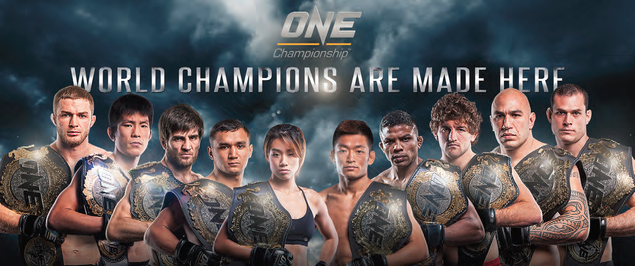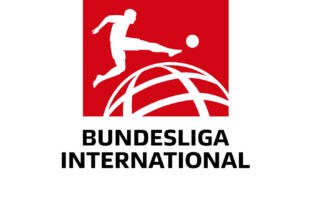
Rising sports programming costs could have consumers crying foul. Nearly half of the monthly cable or satellite bill goes to sports channels. Escalating prices are triggering worries that subscribers will start walking away someday. The owners of baseball’s Dodgers were expected to receive US$6-billionplus for the TV rights to their team’s games. That may be a big win for the home team, but consumers won’t be doing high-fives once they see their pay-TV bills. The average household already spends about $90 a month for cable or satellite TV, and nearly half of that amount pays for the sports channels packaged into most services.
Massive deals for marquee sports franchises like the Dodgers and Lakers are driving those costs even higher. The price of TV broadcast rights for sports in the age of time-shifted Sports fans– get ready to shell out more dollars to watch your favourite teams battle on TV. Well, you’re going to pay more if you want to get traditional television service or internet service from a cable, satellite or telco provider because of the way the industry is structured.
But what is the endgame for the ever-evolving business of sports television? Who will give in: content providers, distributors or the common fan? K. Dass examines the multi-billion dollar questions. viewing has soared. After all, it’s high-demand content that viewers don’t DVR. And unlike other video entertainment, it’s not available on Netfl ix or other Internet services. But as networks bid rights into the stratosphere, something’s got to give. Some distributors fear that unless things change, sports fees could eventually drive consumers away from pay-TV in droves — prompting a plunge the business won’t be able to pull out of. On the other hand, consumer disagreement has yet to become an uncontrolled rebellion, and it’s not clear that the willingness to pay has been tested.
It’s a sure bet that finger-pointing and contract fights between networks and distributors, not to mention viewers and the occasional regulators, will continue. The situation is particularly awful in certain markets. For example: in 2014, Time Warner Cable inked a 25-year distribution pact with baseball’s Dodgers valued at about US$8.5 billion for a team-owned sports network, according to a Los Angeles Times report. To recoup those rights fees, the regional sports network asked for more than US$4 per subscriber per month for just one team, (Whether that winds up being the actual rate is another matter). Meanwhile, individual nets that don’t get carriage could be left holding the bag for massive TV rights.
For the industry as a whole, however, nothing will change unless subscribers begin fleeing in masses. It cannot be assumed that service providers will continue to pay increasing fees for sports rights. In-retrospect, consumers will also reconsider the price tag for premium sports content as they will have to bear the cost through subscription. Indeed, speaking in a panel discussion, Warren Packard, CEO, Thuuz Sports, said that cracks were already appearing in the U.S. He cited the examples of Pac-12, which is now in the fourth year of a dispute with DirecTV and Time Warner Cable, which paid a lot of money to get exclusivity for the LA Dodgers but has since been unable to sell the rights.
The Evolution
Let’s take a step back and analyse how sports has evolved over the years. Sports have advanced from a mere leisure pursuit to a high paying professional career. Together with the sportsmen, an ancillary of services have developed to amplify the game into a periodic event, professionally competed at a regional and global level. An entire ecosystem involving: logistics, insurance, equipment, venues, gear, brewages, supplements, medical care, brands, sponsors, communication, broadcasting and many more professional services. The cushions built to comfort the sportsmen and magnify events have all contributed to the soaring rise in ticket sales, athlete’s compensation and subscription cost.
Television Asia caught up with ONE Championship’s CEO Victor Cui. ONE Championship is Asia’s largest sports media property with a global broadcast reach of over one billion homes in 118 countries. It is widely recognised as the greatest mix of martial arts promotion in Asia. “Sports have evolved from content that you could only engage on your TV screen. Today, you can connect directly with the athletes on Facebook, Twitter, view their lifestyle on images via Instagram, and watch them compete on TV,” says Victor.
“The biggest evolution in sports over the last few years has been in Asia. For the past 3 decades of sports in Asia, all that was done is basically importing Western heroes and having them adopted by Asian sports fans. Rightly so, as majority of the greatest athletes are from the West. Today, in ONE Championship, you will see the making of authentic Asian sports superheroes in a game that we truly are the best – the world of martial arts,” Victor expressed. A total of 6 billion viewers around the world tuned in to watch Live football during the Euro 2016 tournament, according to figures reported by Sky Sports.
Some 300 million TV viewers were reported to have watched the Portugal vs France final, which saw Portugal crowned champions in Paris on July 10th. Akamai recorded a peak audience size of 3.31 million, reaching an average video bitrate of 2.09 Mbps and maximum peak traffic of 7.26 Tbps across its Intelligent Platform. The tournament’s opening match between France and Romania had 200 million TV viewers. The match with the most TV viewers in the UK was between England and Iceland, with 15 million tuning in. The numbers are astounding and sponsors and advertisers certainly got the eyeballs they wanted.
ELEVEN SPORTS’ MD for Asia, Joyee Biswas says, “Live sports on TV have continued to grow in viewership numbers to staggering proportions. Premier League audiences last season reached 4.7 billion passionate fans and while various categories of TV channels have been impacted by nonlinear content, across markets Live sports drives television subscription and viewing. “It is important to offer the fans an option to consume content of their choice, unbundled, at an affordable price on any device of their choice.
ELEVEN SPORTS’ service is available on various platforms and devices including iOS and Android. Fans can subscribe to an engaging line-up of content including top 3 Premier League matches every week Live. Users of the service can take advantage of the online streaming capabilities such as video-on-demand, and the ability to pause and rewind during Live streaming if the user missed something.”
ELEVEN SPORTS NETWORK is a brand new global sports network dedicated to delivering world-class international and domestic sports and lifestyle entertainment. Initial launches include multiple channels across select domestic markets with Singapore receiving more than 2,500 hours of live coverage of premium sporting events annually, along with news, comprehensive analysis, digital content and local programming. International sports rights’ most respected and successful stories are written by MP & Silva with 20 officers distributing TV rights to more than 200 broadcasters in 200 countries. Its MD for Asia-Pacific, Beatrice Lee says, “Due to the need to watch Live content and high demand for premium sports, the value of sports channels always holds a premium because it drives pay-TV growth as well attracting and retaining subscribers and viewers.
At the same time, it generates advertising for broadcasters particularly in today’s fragmented media landscape. “Sports channels are priced higher also because of the premium price of multi-year sports rights. However, pay-TV platforms have often taken bundling strategies to create economics of scale to make sports channels viable for their pay-TV subscribers,” she adds. Damon Garwood, MP & Silva’s MD of Digital and Technology Services shares his views, “Sports content has evolved from both a production and consumption model, and this has predominantly been due to the development in technology over the past 10 years. The mobile phones and the tablets have been big drivers along with advancements in broadband speeds.”
He added, “As a result, sports is produced for multi-platforms rather than broadcast alone and similarly at the editing stage, for 26 min highlights, 3-5 min for digital publishing and 1 min for social platforms. All these factors combined, have created more touch-points for users, increasing viewership greatly with the value of non-Live content being able to keep the story going between Live events no matter which sports we love. “We are in the era where sports content can be consumed on any platform at any time anywhere. This will only increase with new content experiences such as VR and 360 becoming mainstream, allowing sports fans to get closer to the action,” says Damon.
The Cost
When Discovery Communications took a stake in Eurosport last year, the immediate impression was to commit to major international events to change the perception. It secured a US$1.4 billion to Live rights to the Olympic Games and the Winter Games from 2018 through to 2024 in a Pan-European deal – it’s the first time a single broadcaster held the rights to the games across the entire continent. Discovery had appointed sports rights specialist Peter Hutton from MP & Silva Group as European CEO at the turn of the year, signalling its intent, while Discovery Communications CEO David Zaslav had been working with his former NBC Sports boss, Dick Ebersol, known as an Olympic expert. “We are trying to turn Eurosport into something more valuable for the group,” Hutton says. “It clearly has to invest in exclusive rights and exclusive rights that people care about.
It was important to try to cut through the volume of Live hours with something that made an impression and made people see Eurosport in a different way. This one deal does that,” he adds. Biswas stress, “The increase in content options, linear as well as non-linear, has led to fragmentation of viewership. Sports are the only categories which have managed to resist this downward trend and remain the top aggregator of eyeballs. This along with the passion that accompanies the viewership makes sports the top product within any content mix.” Beatrice says, “The boom in sports rights reflects fundamental shifts in the broadcast industry. Viewers are consuming programmes on demand via new media or OTT, skipping the ads. Live sports are therefore crucial for advertisers as the only content that can drive appointment viewing. “However, exponentially escalating content cost is the key issue that is today faced by everyone, and more so in the sports broadcast industry. The cost of rights is determined by market forces and the high cost is a reflection of the demand for the content, the exclusivity of the property that continues to hold audience interest and at the value to business partners that commands the price.” She continued, “Ultimately, the sports genre holds a premium as it continues to be the platform of choice for organisations looking to form a deeper relationship with their stakeholders and viewers.
There is no other media content that provides the variation of audiences, multitude of platforms, content diversity and in-depth integration like sports content offers.” Victor says, “The world of media has always been filled with multibillion-dollar sport properties. It’s nothing new that Live sports is the single biggest driver of media rights around the world. It is the only type of content that continues to drive viewers to watch exactly when you want them to view. ONE Championship is the only sports property in Asia delivering world class Live sporting content in several countries, with a global broadcast. We are also creating local heroes along the way to become Asia’s first multi-billion sports property.” The Winners Biswas says, “While it is unfortunate that the fans often have to pay more on account of escalating sports rights cost, the sports eco-system benefits as the increase of rights fees usually goes to the federation or League and gets distributed to the teams, which invests in better players and facilities. At ELEVEN SPORTS we are determined to offer compelling sports content at affordable price points without any hidden costs.”
“Eventually, everyone in the ecosystem benefits from the lucrative sports media rights industry,” claims Beatrice. “Sport federations and rights holders – media rights fees offers the opportunity to shore up finances, as well as maintain and enhance the sports property, covering all aspects ranging from event management, venue operations as well as financing clubs and players’ salaries – to ensure that it continues to be competitive and to attract viewers. “Broadcasters – Live sports continue to draw TV viewers, therefore giving broadcasters / platforms stability in revenue stream from subscribers as well as advertisers. “Viewers – Sports fans benefit as they are able to watch top quality sports content of their choice,” she added.









